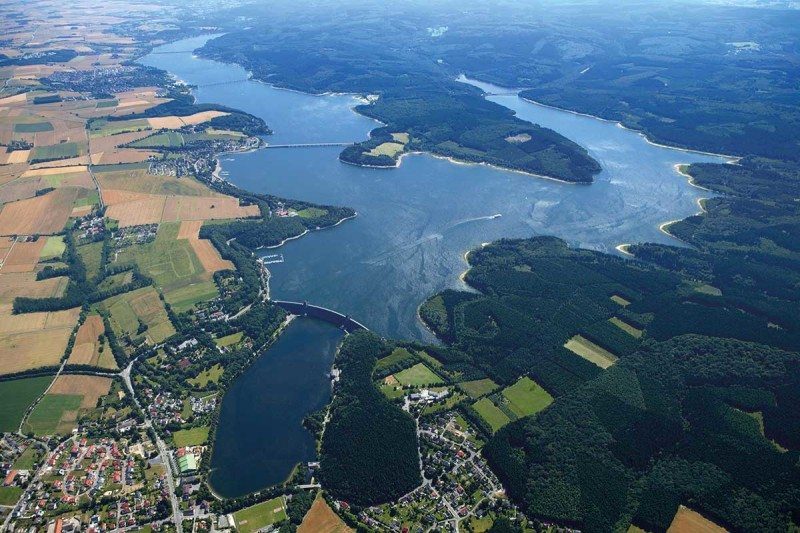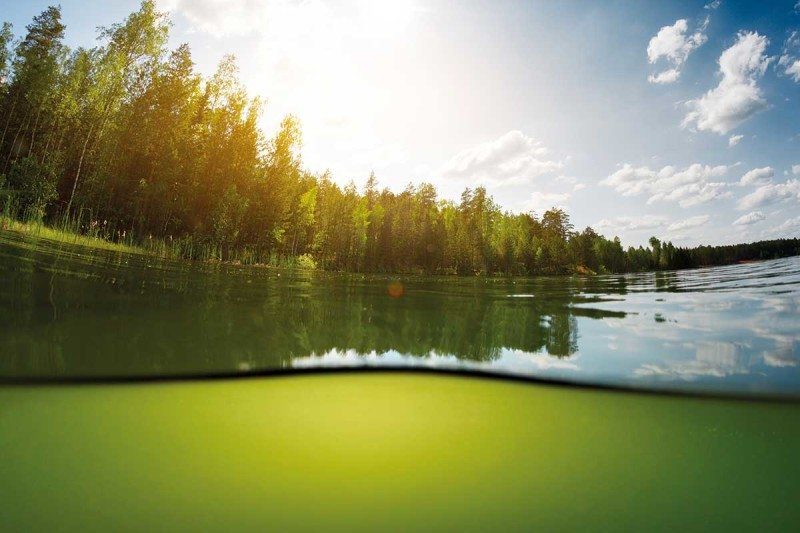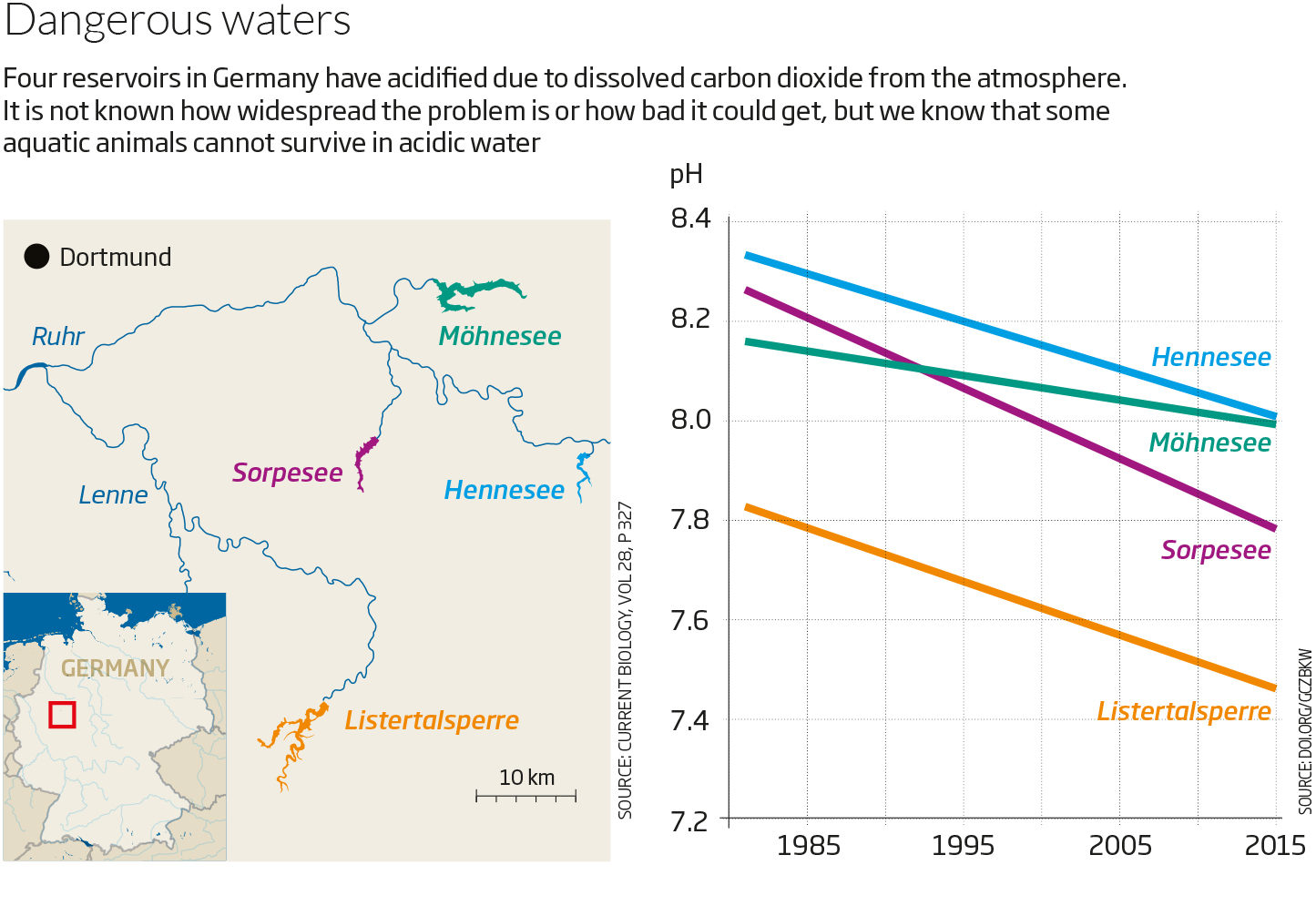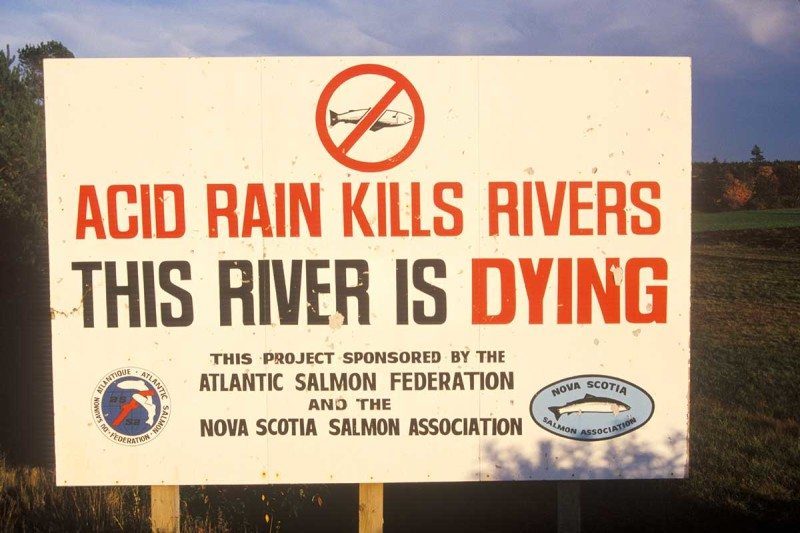But acid lakes are not. Even while many are still recovering from being deluged with acid rain, they face a resumed assault - this time from carbon dioxide. High concentrations of the gas in the atmosphere means more is dissolving in the world's lakes and rivers. Goodbye sulphuric acid, hello carbonic acid.
The new acid invasion shouldn't come as a surprise. For over a decade, marine biologists have been on alert for the effects of acidifying oceans as rising amounts of atmospheric CO2 dissolve into them. But until now, the parallel acidification of rivers and lakes has largely escaped attention. That changed in January with the publication of the first research to pinpoint freshwater lakes accumulating CO2 from the air, and growing more acidic as a result. "The rate of acidification is really quite fast - three times faster than in the world's oceans," says Linda Weiss of the Ruhr University Bochum in Germany, who led the study (Current Biology, vol 28, p 327).
That is obviously a cause for concern. Ocean acidification - sometimes known as "the other CO2 problem" - is expected to have severe effects on marine ecosystems. About a third of all the CO2 released into the atmosphere dissolves in seawater and turns into carbonic acid. Since the industrial revolution, the pH of the ocean surface has fallen from 8.16 to 8.05, a 30 per cent increase in the concentration of hydrogen ions. This isn't a concern yet, but if it continues it will eventually cause some corals and shells to dissolve.
Thus far our knowledge of lake acidification is much more limited. Weiss's groundbreaking study involved just four reservoirs in the Ruhr region of Germany (see map). One is behind the Möhne dam, best known for the Dambusters raid, when it was breached by a bouncing bomb during the second world war. Now the reservoir behind the rebuilt dam, along with three others nearby, is being bombarded with CO2.
Between 1981 and 2015, their pH declined by an average of 0.3 units, equivalent to a doubling of acidity, according to Weiss (see diagram). The reservoirs also showed an increase in dissolved CO2, leading her to attribute the pH change to essentially the same cause as ocean acidification.
The scale of this problem remains unknown. Scientists have long suspected that lakes might soak up rising atmospheric CO2, but they assumed that soils in the lake's catchment would neutralise the acid. On top of that, freshwater chemistry is more complex than ocean chemistry so research has been slow to get going. Weiss's study is the first of its kind; she was lucky to have access to water quality data going back more than 35 years, supplied by the Ruhr Regional Association.
"We cannot estimate whether all global freshwater ecosystems are prone to climate-change-dependent acidification," says Weiss. She concedes that her reservoirs are especially prone because they are on terrain made up of sandstone and clay. The soils have much less potential to neutralise the acid than alkaline chalk or limestone soils.
Hydrogen time bomb
Data on the pH of lakes around the world is poor, so researchers elsewhere are now likely to be rushing to find out if theirs are experiencing something similar. It is possible that the German lakes are an outlier: British researchers say they have seen no similar impact. The Centre for Ecology and Hydrology, a UK government research agency whose work includes monitoring the chemistry of water in the Lake District, says it has seen no increase in CO2 accumulation or acidification.
But another factor in Weiss's study gives cause for global concern. Far from neutralising the acidification, terrestrial ecosystems are amplifying it, she says. Extra CO2 in the air encourages plants to grow faster. The extra plant matter on the land eventually decays, resulting in more organic and inorganic carbon in run-off into rivers and ultimately an even bigger build-up of carbonic acid in lakes.
An early target for investigation should be the Great Lakes in North America, already threatened by climate change. In 2015, Jennifer Phillips at the University of Minnesota's Large Lakes Observatory predicted that the world's largest freshwater system was likely to acidify by up to 0.5 units by 2100. It may be ongoing already, she says, but current monitoring of the lakes is insufficient to pick up trends.
If there is a new epidemic of acidification, what might it mean? One obvious source of information is the acid rain catastrophe of the 1970s and 1980s, when lakes and streams across northern Europe, eastern Canada and parts of the US received deluges of sulphuric acid. In many places, the natural capacity of ecosystems to neutralise the acid was exhausted. The pH of some lakes fell below 5, acidic enough to kill molluscs, crustaceans, amphibians and fish. Thousands of trout and salmon were found dead on the banks of streams; lakes became crystal clear because they contained almost no life.
International relations acidified too, as neighbours blamed each other for the pollution. Canada railed against the US. Norway's green-minded prime minister Gro Harlem Brundtland accused her UK counterpart Margaret Thatcher of allowing clouds of acid pollution to cross the North Sea. Eventually a European club of nations agreed to fit sulphur "scrubbers" to their power stations. The US passed a Clean Air Act in 1990 with similar aims. Since then, the lakes have been slowly recovering - until now.
Canary in a coal mine
Weiss, an aquatic ecologist, investigated the Ruhr reservoirs after making disturbing discoveries in the lab about how lake species respond to more acidic waters. In particular, she found that increasing amounts of carbonic acid messed up the ability of the water flea Daphnia, a key species in freshwater ecosystems across the globe, to ward off its many vertebrate and invertebrate predators.
These tiny crustaceans thrive in part because they have a range of defences, including spikes on their heads known as neckteeth. But when Weiss exposed Daphnia to higher levels of dissolved CO2 in the water, the armour shrank. It also hampered the animals' ability to sniff out predators. The effect won't be limited to Daphnia, says Weiss. Other invertebrates and even many fish use smell to sense predators.
There is a growing research literature on biological changes caused by acidified fresh water, says Caleb Hasler at the University of Illinois at Urbana-Champaign.
Most studies so far focus on fish, which show reduced growth rates, higher mortality, sub-lethal injuries and changes of behaviour - possibly because of the "narcotic effect" of excess CO2 in their blood. In addition, researchers at the University of British Columbia in Vancouver found that the larvae of Pacific pink salmon grow more slowly in fresh water with too much dissolved CO2. Slower growth rates have also been seen in mosquito larvae and American bullfrogs. Plants have problems reproducing.

Soils were also critical to which lakes were affected by acid rain, and by how much. Those containing alkaline rocks like limestone neutralised the acid before it reached lakes, but those in granite or sandstone areas couldn't. That might suggest that lakes hit hardest by acid rain will also suffer at the hands of CO2. But again, that could be too simplistic.
There are important differences in the modes of acidification. Acid rain was a local pollutant, raining down on areas at most a few hundred kilometres downwind of big emission sources. CO2 is a global problem, thoroughly mixed in the atmosphere. The rising levels in the air will enter lakes and rivers everywhere, either directly by dissolving in the water, or indirectly via local ecosystems. These differences will influence the risks to different lakes.
The size of the waterways also matters. Take the Great Lakes, with a combined surface area of almost 250,000 square kilometres. Though huge, they drain land areas that are comparatively small. During the days of acid rain, the amount of acid that reached them from the land was relatively modest and they didn't acidify. But Phillips, now at the California Ocean Protection Council, says they will be affected by CO2 acidification because their large surface area is constantly absorbing the gas from the air. By contrast, many small lakes that were badly hit by acid rain may be unaffected by CO2 acidification.
To some, the entire issue is an acid bath in a teacup. The great majority of lakes currently release more CO2 into the atmosphere than they absorb, says Emily Stanley at the University of Wisconsin-Madison. This is because they accumulate organic carbon from vegetation in their catchments, which then decays and releases CO2. She reasons that the number that could take in atmospheric CO2 "is likely to be a small fraction of the world's lakes". Stephen Maberly at the Centre for Ecology and Hydrology agrees. He says that concern about acidification of fresh waters is "a bit of a bandwagon".
But Phillips warns this could be dangerously complacent. It is far from clear that lakes that emit CO2 will avoid acidification, she says. Most lakes both absorb and release CO2 from the air. So even if greater absorption only shifts the balance a little, it could still lower their pH. "All else being equal, they will still acidify," she says.
Colin Brauner at the University of British Columbia agrees that raised levels of CO2 in the air are bound to result in freshwater acidification "and we have very limited understanding of how that will affect those ecosystems". Many may experience few effects, but others could be devastated. After all, most lakes in Europe and North America were unaffected by acid rain. But those that did suffer, suffered badly.
People who are sanguine about the risks could be falling into a similar trap as those who once cast doubt on concerns about acid rain. Back then, many researchers initially reassured the world that the acidity being discovered must be natural and long-standing because ecosystems would absorb any fallout from the air. It also took a while to establish that some of the worst effects were due not to the acid itself, but to sulphates in the acid rain and toxic aluminium unleashed from soils by the acidity. There could be similar surprises ahead for the new era of acidification. For example, Weiss says it is the dissolved CO2 rather than the acidity itself that most affects the lake species she has studied.
Nature might ultimately adapt to more acidic and CO2-rich waters, says Antoine Leduc at the Federal University of Bahia in Brazil. Through natural selection, invertebrates and fish might be able to learn new chemical cues to spot predators, for instance. But they may not. The trouble is that right now we simply don't know what the chances are.
The question is whether we can find a quick fix if nature doesn't come to the rescue. In the 1980s, some countries sprayed their acidifying lakes with lime to neutralise them and bring back fish. Sweden has been treating thousands of lakes in this way ever since. But the scale of the task is enormous. The only real solution - for fresh water as much as the oceans - lies in stabilising CO2 levels in the atmosphere.
There was a time when the international effort to combat acid rain was seen as a model for the much bigger problem of climate change. If nations could come together and eliminate sulphur dioxide pollution, why not carbon dioxide? Events over the intervening years suggest that was a naive assumption. This time, there may be no neutralising the problem.
Dissolving a problemThis article appeared in print under the headline "Lakes of Acid"
Freshwater acidification may not always be bad news. Extra acid may be about the only thing able to purge the North American Great Lakes of their most deadly invasive species, quagga mussels.
Since their arrival from eastern Europe 30 years ago, quaggas have been wrecking the ecosystems that sustain fish populations. They are even outcompeting an earlier interloper from the same region, the zebra mussel.
But quagga mussels have an Achilles heel, says Jennifer Phillips of the California Ocean Protection Council. Their shells are made of aragonite, which readily dissolves in acid. So much so that researchers have previously suggested using artificial acidification of lakes to get rid of quagga invasions. Could nature achieve the same thing?
It is an intriguing idea. But there might be a sting in the tail. Other research has suggested that the quagga invasion of the lakes has damaged their ecosystems so much that they are increasingly emitting carbon dioxide into the air. This raises the possibility of an unpleasant positive feedback. If lake acidification gets rid of the quaggas, it could result in even more CO2 in the lakes and accelerated acidification.






This is the dumbest "Science" claim I've heard all week. And I waited until Saturday.